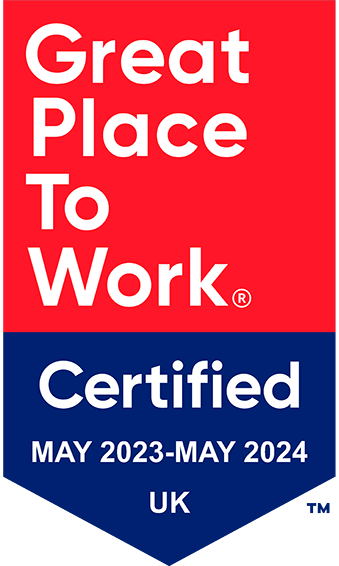Source: Forbes
Publish date: 8th March 2022
As Covid-19 cases decline and the CDC updates its guidance for public health and safety, many remote businesses are starting to consider whether now is the right time to head back into the office. If you’re contemplating this decision, you’ll need a plan in place to safely return to work.
There are a lot of factors to consider, starting with the needs of your employees. Some employers may want to implement a hybrid work model. Others may need to have a physical space and should know what health guidelines to follow before reopening.
To help you prepare, 14 Forbes Business Council experts shared their best advice for safely reopening offices.
1. Prioritize Cleanliness
Although we are eager to return to some sort of normalcy, cleanliness will forever be a priority—especially in the workplace. As a society, we have learned quickly over the past two years that cleanliness isn’t personal, it’s global. Businesses can provide a sense of safety when they open back up.
Zeynep “Z” Ekemen, Silver Defender
2. Involve Employees In The Decision
An inclusive innovation culture is key here. It is imperative that your employees feel empowered to be involved in these decisions. Driving this culture which is constantly involved in making key cultural decisions and innovating processes and procedures will keep your employees happy and comfortable that they are in charge of their own safety decisions. Mental and physical health look after wealth.
Ryan Surry, Intaso
3. Try A Hybrid Work Model
Embrace the new normal and be open to the evolved mindset of your employees. People all over the world are impacted differently and we need to be more empathetic when we are thinking of reopening offices. A hybrid work environment may turn out to be as effective as being present all the time. Customers equally understand this challenging environment and are open to new ways of engaging with brands.
Rahul Agaskar, Neutrino Advisory
4. Provide Inclusive Employee Support
It is critical that return to work and safety plans are inclusive of all employees. Considering the physical and mental health implications the pandemic has had on individuals, it is important to think of all the barriers that employees may face at work. Providing a flexible work schedule, mental health resources or permanent telework can help retain employees in the long run.
Karen Herson, Concepts, Inc.
5. Have A Flexible Sick Leave Policy
As an essential industry, we’ve never been fully remote. To keep employees safe, we’ve incorporated touchless technology and redesigned cubicles to help with social distancing. We found this also helped reduce colds and the flu throughout our office. Most importantly, we encourage employees to put themselves first. Our sick leave policy is flexible so employees can stay home when they are sick.
Deron Brown, PCL Construction
6. Stop Separating Mental And Physical Health
People come before profits—always. Also, physical health is no longer a separate item from mental health. We are whole and complete human beings and creating a safe environment means taking steps to reduce stress, as well as to keep viruses at bay. A stressful customer experience that can result from an employee with a poor attitude is not desirable either.
Claudia Freed, EALgreen
7. Have Your Space Certified For Employee Wellness
If you have to return to an office, consider having the space certified for employee wellness. If you can avoid returning to the office, you get to hire the best talent in the world without logistical challenges. I never loved the idea of incredibly talented people stuck in traffic to sit in a cubicle. This is a chance to really ask yourself if you need an office.
David Perry, Carro
8. Encourage Healthy Employee Lifestyles
Safety must always come first, especially with employees. In our business, we don’t come into direct contact with our customers. We do our best to encourage a healthy lifestyle so that we are always at our best in order to give our customers the best product and experience with our company. When an employee gets sick they must follow all guidelines so as not to infect anyone else in the company.
Mark Willes, Experience Dental Studio
9. Allow Employees To Choose What Works
Encourage new rhythms that balance in-office and remote work, allowing employees to make the right and healthy decisions. Set individual employee goals based on measurable performance metrics and give them the freedom and flexibility to work in a way that suits their lifestyle.
Tim Foot, Slingshot Group
10. Have A Phased Reopening
The world of work has changed since we were all last in the office together. There are tasks and roles that can be performed remotely, new and better ways to communicate and technology tools available to help with office reopening and management. For example, bots and digital assistants can be used to manage a phased reopening and get feedback from staff who have returned to in-person working.
Tom Gibby, The Bot Platform
11. Ask If You Really Need To Reopen
First, you need to ask whether you really need to reopen. While we do have offices, I believe you need to put your people first. So in our company, nobody is required to be in an office. I want the people on my team to work where they are happiest. Is that in the office? Great, go in and follow guidelines. Is that at home with your kids? Just as great, stay home.
Dylan Ogline, Ogline Digital`
12. Lead By Example
“Safety First” is more than a motto—it’s the way an industry needs to be to serve its employees. When employees see a top-level commitment to safety and are empowered to contribute, they too will embrace a safer work environment and work habits to help create ideas for success and continual improvement.
Chris Gerlach, Synergy Life Science
13. Understand And Empathize With Employees
We’ve taken the view that we need flexibility and choice in our approach going forward. Also, recognize that everyone’s home environment and circumstances are different, so their desire to be in an office or be at home will be different. Understanding and empathizing with that helps to shape the policy and plans you put in place.
Jason Foster, Cynozure Group Ltd
14. Follow CDC Guidelines And Provide Supplies
Opening our doors required education, new safety and health protocols and a plan. I distributed a list of CDC guidelines, urgent care and resources for testing. I implemented a questionnaire regarding Covid-19 symptoms. My office keeps rapid tests, masks, hand sanitizer and visible signs. Communication is key. We have mutual respect for one another and have discussions of everyone’s individual comfort levels.
Elliot Ashkenazie, Merchants Cash Partners








